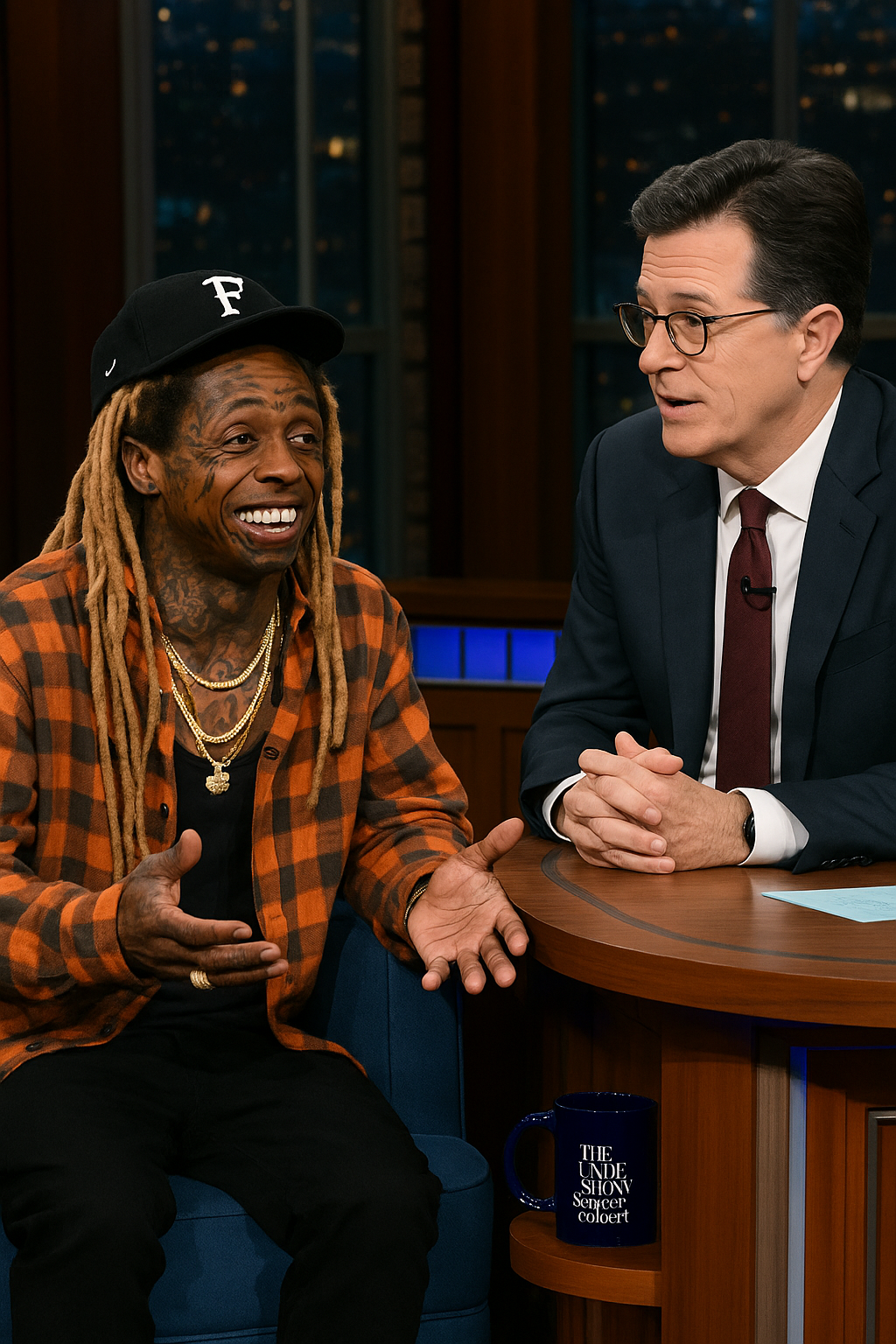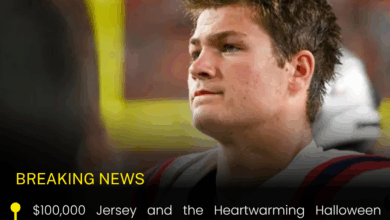HH. BREAKING MOMENT ON LIVE TV — LIL WAYNE JUST SAID WHAT MOST MEN WON’T
Lil Wayne has never been shy about peeling back the layers of his life — the triumphs, the regrets, the reinventions — but in a recent fictionalized Late Show-style interview with Stephen Colbert, the legendary rapper offered a surprisingly thoughtful, unconventional take on marriage, commitment, and what freedom means to him at this stage of life.
At 44, Wayne has lived more lifetimes than most people do in twice the years. He has seen the heights of superstardom, the chaos of fame, the pitfalls of loyalty, and the weight that comes with being one of rap’s most prolific icons. But when Colbert jokingly asked him whether he’d ever considered “settling down,” Wayne leaned back in his chair, grinned that unmistakable Wayne grin, and delivered a line that instantly made the studio lean in:
“I’ve made plenty of mistakes in my life… but marriage ain’t one of them.”
The audience laughed, thinking it was another classic Weezy punchline.
But the tone shifted — gently, almost unexpectedly — as Wayne unpacked what he meant.
He wasn’t talking about a wedding or a spouse.
He was talking about the choice not to marry, and why that decision has been one of the most stabilizing forces in his life.
Wayne explained that for someone in his position — wealthy, high-profile, constantly navigating attention — relationships become layered with pressure that most people never have to consider. “Love is real,” he said. “But so is complication. So is expectation. So is everything that comes with being ‘Lil Wayne,’ not just Dwayne.”
He talked about valuing independence, clarity, and emotional space.

He admitted he had rushed into relationships when he was younger, searching for belonging in all the wrong places. And he reflected on how maturity had allowed him to understand himself better — what he wants, what he doesn’t, and what kind of environment he needs to thrive.
“I’m safe,” he told Colbert. “I’m not a happy hostage. I’m here. I’m free.”
It was the kind of line that doesn’t just land — it echoes.
Fans interpreted it not as cynicism, but as agency: a man who has found peace by refusing to force himself into society’s blueprint for success.
Colbert, ever perceptive, asked whether Wayne thought his stance contradicted traditional ideas of happiness — that marriage is the “final chapter” in life’s checklist. Wayne shook his head with a soft smile. “Nah. I think my version of success just looks different. That’s all.”
He emphasized that marriage isn’t a moral test or a badge of worth. For some people, it’s the right path. For others, happiness lies in autonomy, self-ownership, and emotional stability. And neither version, he said, should be judged as superior.
What struck viewers most wasn’t the philosophy itself, but the way Wayne articulated it: calm, thoughtful, self-assured. A man who has spent decades being analyzed, criticized, and mythologized — finally defining freedom for himself.
In an era where fame often pressures artists into picture-perfect narratives, Lil Wayne’s perspective feels refreshing, honest, and deeply human.
A reminder that success isn’t always about adding more.
Sometimes, it’s about choosing less — and choosing yourself.



